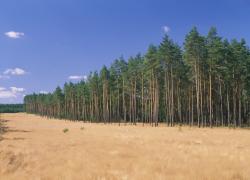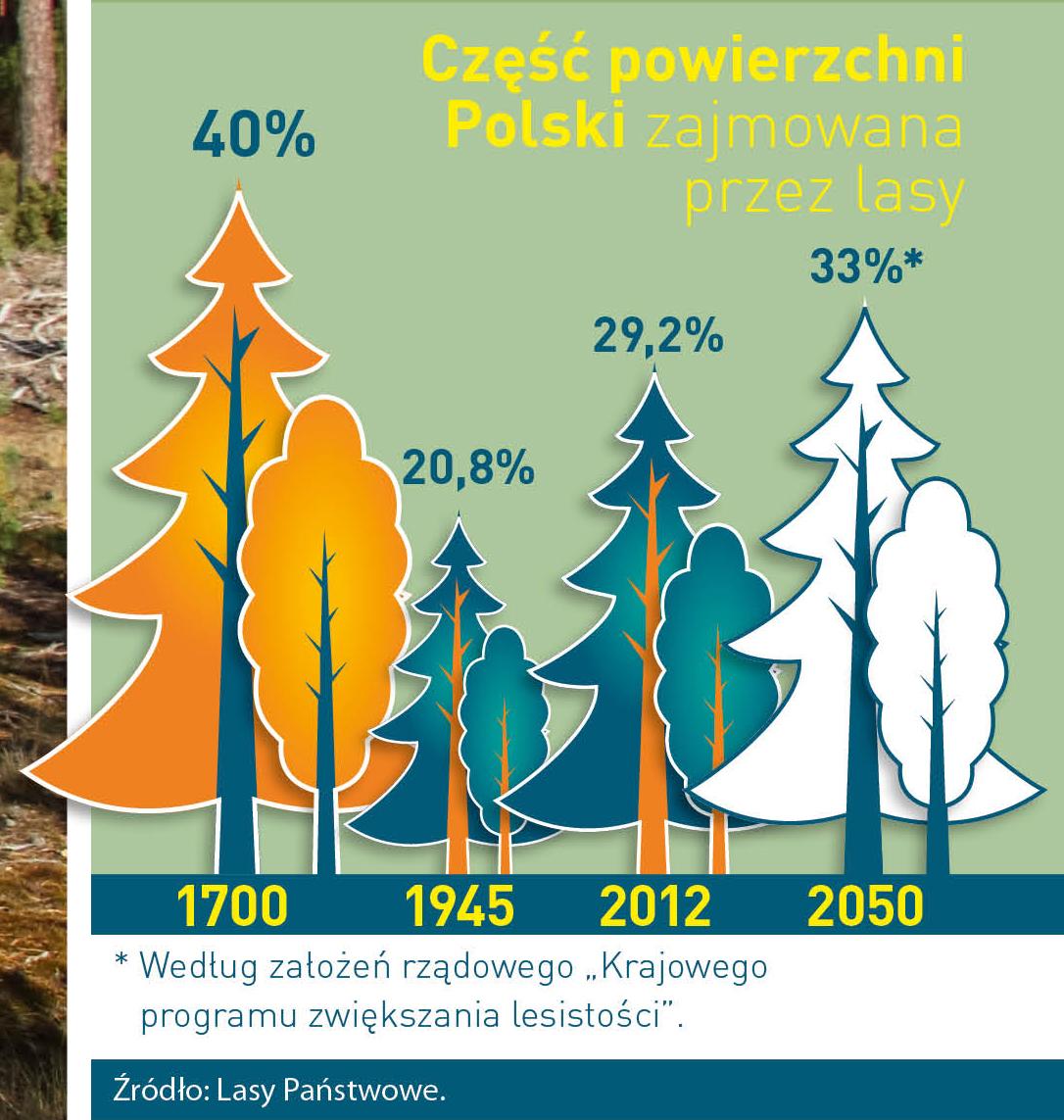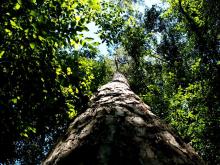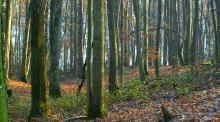 Asset Publisher
Asset Publisher
Polish forests
Poland is in the European lead, while concerning the area of all forests. They cover about 29,2 % of the country territory, and grow within the area of 9,1 million hectares. The overwhelming majority of the forests is state owned, of which almost 7,6 million hectares are managed by the State Forests National Forest Holding..
The number of Polish forest is still growing. The forestation rate of the country has increased from 21 % in 1945 to 29,2 % at the moment. Between 1995 and 2008, the forest area increased by 310 thousand ha. The basis for afforestation works is the "National Programme for Increasing the Forest Cover" (KPZL), assuming an increase of the forestation rate up to 30 % by 2020 and up to 33 % by 2050. Polish forests abound in flora, fauna and fungi. 65 % of the total number of animal species live there.
The forests grow in our country on poor soils, mainly because of the development of the agriculture in previous years. It influences the distribution of the types of the forest sites in Poland. Over 55 % of the forest areas is covered with coniferous forests. In other areas, there are forest sites, mainly the mixed ones. Their small part constitute alder and riparian forests – not more than 3 %.
In the years 1945 – 2011 the area of natural deciduous tree stands within the area of the State Forests National Forest Holding increased from 13 to 28,2 %.
Within the lowlands and uplands the most often occurring tee species is pine. It covers 64,3 % of the forest area of the State Forests National Forest Holding and 57,7 % of private and commune forests. In the mountains the predominant species is European spruce ( in the west) and European spruce with beech (in the east). Domination of pine is the result of carrying on sustainable forest management in the past. Once, the monocultures (crops or cultivations of one species) were the answer to the great demand of industry for wood. Such forests appeared to be quite fragile to climatic factors. They also were often the prey of pests' expansion.
In Polish forests, the share of other tree species, especially deciduous trees have been systematically increasing. The foresters have stepped aside from monocultures – that is why, they try to fit specific species of the forest stand to the natural stand, that would be proper for the given area. Thanks to that, in the years 1945 – 2011, the area of the deciduous tree stands within the lands of the State Forests National Forest Holding increased from 13 to 28,2 %. There occur more and more frequently the following tree species: oaks, ashes, maples, sycamore maples, elms, but also birches, beeches, alders, poplars, hornbeams, aspens, tilias and willows.
Our forests are the most often represented by the forest stands aged 40 to 80 years. The average age of the forest equals 60 years. More and more trees are of big size at the age over 80 years. Since the end of the Second World War, the forests' area has increased up to almost 1,85 million hectares.
Raport o stanie lasów w Polsce 2012
 Asset Publisher
Asset Publisher
Lasy Państwowe z dodatnim wynikiem finansowym za 2024 rok
Lasy Państwowe z dodatnim wynikiem finansowym za 2024 rok
Lasy Państwowe w 2024 roku osiągnęły wynik finansowy na poziomie ok. 764 mln zł netto, przy planowanym wyniku w wysokości ok. 350 mln zł. Plany na 2024 rok tworzyło jeszcze poprzednie kierownictwo Lasów Państwowych; wynik finansowy jest wyższy od zaplanowanego dzięki rezygnacji z niepotrzebnych wydatków. Co istotne, wysokość wyniku finansowego ukształtowała się na podstawie realizacji planu opartego o potrzeby lasu.
Lasy Państwowe zamknęły finansowo rok 2024, osiągając wynik finansowy na poziomie 764 mln zł netto. Obowiązkowa wpłata, którą LP przekazały do budżetu Państwa z tytułu prowadzonej przez siebie sprzedaży drewna za 2024 r. wyniosła ok. 224 mln zł.
Poza powyższą wpłatą do budżetu, Lasy Państwowe w minionym roku odprowadziły m.in. 387 mln zł podatku leśnego oraz 36 mln zł podatku od nieruchomości, 1,5 mld zł podatków i innych obciążeń pośrednich, 1,8 mld zł podatku VAT. W sumie daje to kwotę ponad 4 mld złotych.
- Mamy świadomość ogromnej roli gospodarczej, jaką pełną Lasy Państwowe w naszym kraju. Suma wpływów do budżetu państwa bezpośrednio od Lasów Państwowych prawie to 4 miliardy złotych. Dodatkowo, rzeczywiste koszty, jakie LP ponoszą z tytułu realizacji zadań związanych z ochroną przyrody szacowane nawet na miliard złotych. Rosną koszty wynikające z potrzeby dostosowania lasów do zmian klimatu oraz ochrony lasu, sam koszt rocznej ochrony przeciwpożarowej Lasów Państwowych to niemal 160 mln zł. Wyzwań jest dużo, ale zeszłoroczny wynik finansowy pokazuje, że leśnicy dobrze gospodarują majątkiem skarbu Państwa - mówi Jerzy Fijas , zastępca dyrektora generalnego Lasów Państwowych ds. zrównoważonej gospodarki leśnej
Sektor leśno-drzewny, którego kołem zamachowym są Lasy Państwowe wypracowuje około 4% PKB. Jest to wartość zbliżona do tej, którą z budżetu państwa przeznaczamy na obronność.
Należy także podkreślić, że pojawiające się w mediach oraz wypowiedziach polityków informacje na temat prognozowanej na 2025 r. straty Lasów Państwowych, wynoszącej 700 mln zł, nie są prawdziwe. Na chwilę obecną, prognozy finansowe pozwalają szacować, że Lasy Państwowe osiągną w 2025 roku dodatni wynik finansowy na poziomie ok 400 mln zł brutto.
- Odpowiedzialność za słowo nabiera w dzisiejszych czasach coraz większego znaczenia. Przedstawianie w przestrzeni publicznej informacji w sposób niepełny, w sposób osadzający je w fałszywym kontekście lub mówiąc wprost – przestawianie informacji zmanipulowanych lub nieprawdziwych, w odniesieniu do przedsiębiorstwa stanowiącego jeden z filarów polskiej gospodarki jest, zwłaszcza w świetle obecnej sytuacji międzynarodowej, jest działaniem skrajnie nieodpowiedzialnym - mówi Witold Koss, dyrektor generalny Lasów Państwowych.
Wynik finansowy dotyczący 2025 roku będzie w ogromnej mierze zależał od tego, jak w drugim półroczu będą kształtowały się ceny drewna.


 fot. Paweł Fabijański
fot. Paweł Fabijański
 fot. Paweł Fabijański
fot. Paweł Fabijański
 fot. Paweł Fabijański
fot. Paweł Fabijański





